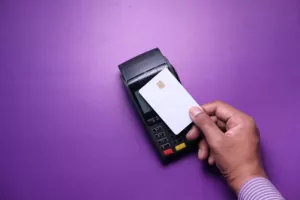Introduction to EFT Payments
Electronic Fund Transfers (EFTs) have revolutionized the way we move money in the digital age. Understanding the intricacies of EFT payments is essential for businesses and consumers alike to navigate the modern financial landscape effectively.
What are Electronic Fund Transfers?
EFT Payments refer to the electronic movement of money between financial institutions, eliminating the need for physical cash transactions. This can include direct deposits, wire transfers, and automated clearing house transfers.
Brief History of EFT Payments
The concept of EFT payments dates back to the 1860s when telegraph companies began facilitating money transfers. Since then, technological advancements have streamlined the process, making EFT payments a cornerstone of modern financial systems.
Importance of EFT Payments in Today’s Digital Economy
In today’s fast-paced digital economy, EFT payments play a crucial role in enabling seamless transactions, reducing reliance on paper-based methods, and improving overall efficiency.
Types of EFT Payments
Understanding the various types of EFT payments available can help individuals and businesses select the most suitable option for their needs:
Direct Deposits
Direct deposits involve the electronic transfer of funds directly into a recipient’s bank account, such as payroll deposits or government benefits.
Wire Transfers
Wire transfers are expedited EFT payments that involve the immediate transfer of funds between financial institutions, often used for high-value transactions or international transfers.
Automated Clearing House (ACH) Transfers
ACH transfers are electronic payments that are processed in batches, typically used for recurring transactions like bill payments or direct debits.
Advantages of Using EFT Payments
EFT payments offer numerous benefits over traditional payment methods, including:
Convenience and Efficiency
EFT payments allow for quick and convenient fund transfers without the need for physical checks or cash, saving time and reducing administrative burdens.
Cost-Effectiveness
Compared to paper-based transactions, EFT payments are often more cost-effective, with lower processing fees and reduced risk of errors.
Enhanced Security and Fraud Protection
EFT payments are secured through encryption and authentication measures to protect against fraud, offering greater peace of mind for both senders and recipients.
How EFT Payments Work
Understanding the process of initiating, processing, and settling EFT payments is essential for ensuring smooth transactions:
Initiating an EFT Payment
EFT payments are initiated by the sender through a secure online portal, banking app, or third-party payment service, providing necessary details such as account numbers and transaction amounts.
Processing and Clearing EFT Transactions
Once initiated, EFT transactions are processed through the respective financial institutions involved, ensuring accurate routing and verification of funds.
Settlement of EFT Payments
EFT payments are settled electronically, with funds transferred between accounts and reflected in the recipient’s balance within a few business days.
Considerations for Businesses and Consumers
Before utilizing EFT payments, it’s essential to consider the following factors:
Factors to Consider Before Using EFT Payments
Consider transaction fees, processing times, and security measures when selecting EFT payment methods to ensure they align with your financial goals.
Best Practices for Securing EFT Transactions
Protect sensitive information, use secure networks, and regularly monitor account activity to safeguard against fraudulent activities.
Common Mistakes to Avoid When Making EFT Payments
Double-check account details, verify recipient information and maintain backups of transaction records to prevent errors or unauthorized transactions.
Summary
In conclusion, Electronic Fund Transfers offer a secure, efficient, and cost-effective method for transferring funds in today’s digital world. By understanding the types, advantages, workings, and considerations of EFT Payments, businesses, and consumers can make informed decisions when utilizing this payment method.
FAQs
Are EFT Payments safe to use?
Yes, EFT Payments are considered to be secure, with measures in place to protect against fraud.
How long does it take for an EFT payment to be processed?
Processing times for EFT payments vary, but transactions are typically completed within 1-3 business days.
Can I reverse an EFT payment?
Reversing an EFT payment is possible but can be complex and may involve additional fees. It’s advisable to verify all details before initiating a transaction to avoid the need for a reversal.





